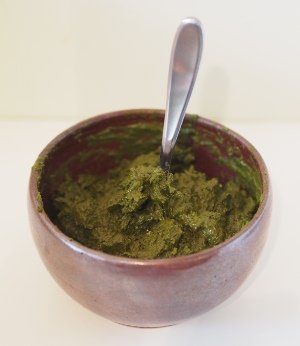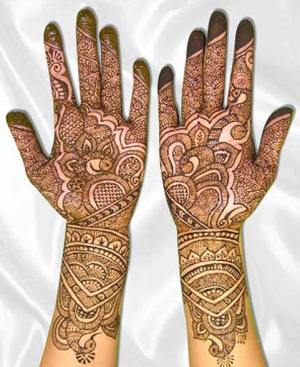HENNA
 To a lot of people, the word henna conjures up images of intricately hand, feet and general body decorations. But did you know that henna is completely natural? Henna is a paste that is made from crushing the leaves and the twigs of the henna plant.
To a lot of people, the word henna conjures up images of intricately hand, feet and general body decorations. But did you know that henna is completely natural? Henna is a paste that is made from crushing the leaves and the twigs of the henna plant.
The henna plant goes by various names such as the henna tree, mignonette or the Egyptian Privet. The tree can grow up to fifteen feet high. It is a woody plant that produces scented flowers that are used to make perfume. The resulting paste (dye) which is pale green in colour is what is known as henna. The dye itself is called Lawson and orange/red in colour and is very safe to use.
Where did Henna originate from?
The origins of henna are conflicting, however what has never been in doubt is that Henna has been used for more 9000 years. It is believed that Henna originated from India, yet other accounts suggest that it originated in ancient Egypt and used to beautify pharaohs.
Henna was also used by people who lived in the desert to cool themselves off. They did this by making a paste and then dipping there feet and hands in that paste. It created a cooling sensation, which was a relief from the scorching sun.
The uses of Henna
To decorate hair, skin and nails
• For the hair, henna results in a range of colour depending on the shade of your hair. It can be bright red, red highlight, to brown. To get the shade you desire, keep dyeing your hair with henna until you get the shade you want.
• When you apply henna on the nails, the resulting colour is bright orange. It’s long lasting, staying as long as the nail. As the nail grows, you’ll notice that the new nail has no henna but the original henna on the old nails remains. Henna is the best alternative to nail polish; it’s long lasting and has a leasing, unique look.
• Henna makes beautiful designs on the skin which can last for months. In some cultures, women apply henna for festivities such as weddings and also other celebrations.
Medicinal uses
• Henna is used to treat cracking and weak nails. To treat your cracked nails, soak henna leaves in water overnight and then drink this mixture. Do this for ten days.
• Dandruff can be treated using henna because it’s anti-bacterial and anti-fungal.
• Henna use is known to seal and repair hair cuticles, thus maintaining the healthiness of the hair.
• The bark of the henna plant is used to treat liver enlargement and jaundice.
• Due to its cooling effect, henna is used to treat headaches brought about by excess heat. The henna flowers are crushed into a paste, which is then applied to the temples. It gives instant and quick relied to the headache sufferer.
• Arthritic pain can be reduced by massaging henna oil to the affected limbs. Regular massaging can over time, greatly reduce this pain.
• Because of its anti-bacteria and anti-fungal qualities, henna can be used to treat various skin conditions such as ringworms and athletes foot.
• Henna leaves boiled in mustard oil can be used to treat baldness. This mixture is rubbed onto the scalp regularly.
• The bark of the henna plant is very effective in treating dysentery. The seeds are crushed and mixed with ghee, rolled into small balls which are then swallowed with water.
• If you regularly get a sensation of your feet burning, mix the leaves of the henna plant with vinegar and apply to the soles of your feet.
• If applied to a burn, henna decreases the infection on the site, decreases the pain and ir decreases fluid loss from the burnt area.
• Applied as a paste, henna helps to get rid of stubborn warts. Apply the paste for a period of several weeks, and soon it will gradually disappear.
The advantages of henna
•  Unlike other decorative treatments such as tattoos, henna is not permanent and the colour starts to fade after four to six weeks. When it does fade, it doesn’t leave any residues on your skin or hair.
Unlike other decorative treatments such as tattoos, henna is not permanent and the colour starts to fade after four to six weeks. When it does fade, it doesn’t leave any residues on your skin or hair.
• Long term use of henna is safe as compared to other products laced with chemicals. Henna is a natural product, with no chemicals added.
• While it dyes your hair, henna also enhances your natural hair colour, leaving it shiny and healthy looking.
• When used on the hair, it cleanses the hair, without stripping the hair of its natural oils. It also helps to add body to hair, especially for people with thin, limp hair.
• Because of how natural henna is, it rarely causes any allergic or adverse reactions, although it’s advisable to start off with a small patch to test it on your skin or hair.
The disadvantages of using henna
• As with most natural products, it’s difficult to give an exact outcome of using it on hair or skin. It will give different shades depending on many factors such as your natural a colour, the quality of the henna etc.
• Dyeing hair with henna is a messy process which can mess up your clothes. It also a time-consuming process, involving mixing the paste with liquids such as green tea, and then leaving it to sit overnight.
• A section of henna users have complained of excessive dryness of hair; however this can be countered by regular conditioning of the air.
• Henna is pretty long lasting, and can stay for months. This means that you must be prepared to stay with that colour until it fades off.
• Some retailers pass of black henna as natural henna which is not the case. Natural henna only results in that red/brown colour, not black. Products marketed as black henna are in fact not henna, and can even cause dangerous allergic reactions due to the substances used to make it.
• Henna can cause a permanent loss of curls in your hair (although this may not necessarily be a disadvantage)
